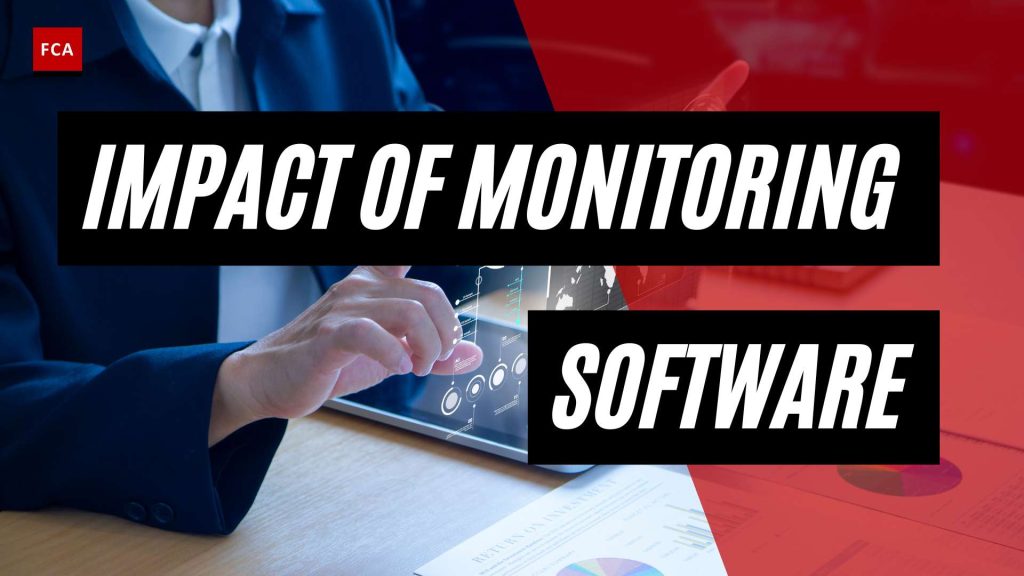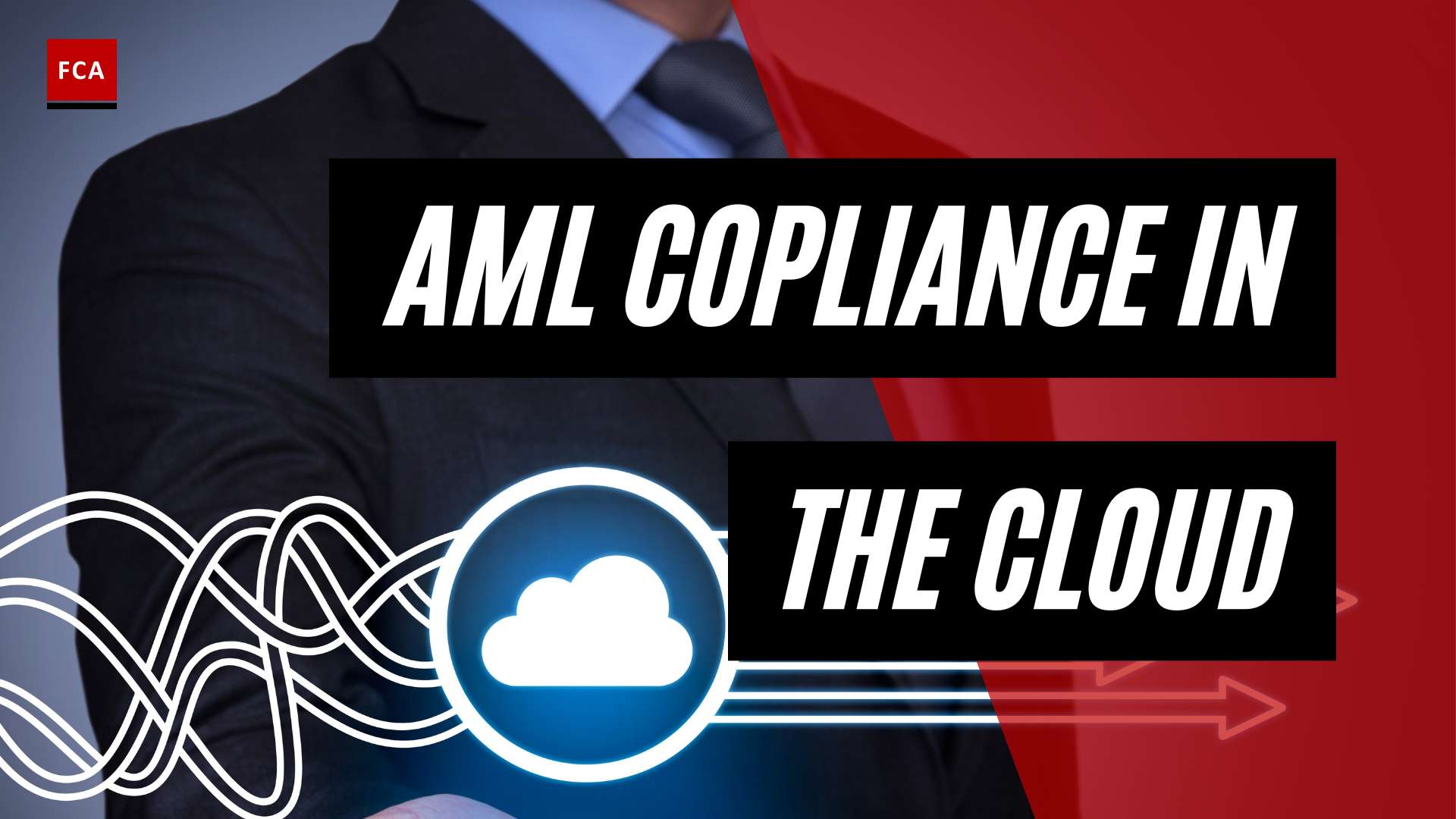Understanding Transaction Monitoring Software
In the realm of financial institutions and AML compliance, the importance of transaction monitoring software cannot be overstated. This section will provide an overview of what transaction monitoring software is and highlight its significance in ensuring regulatory compliance and detecting potential financial crimes.
What is Transaction Monitoring Software?
Transaction monitoring software is a powerful tool used by financial institutions to analyze and track financial transactions in order to identify and prevent illicit activities such as money laundering and fraud. By leveraging advanced technologies like machine learning and artificial intelligence, this software examines transactional data, customer profiles, and historical patterns to detect suspicious activities (Fraud.com).
The software helps financial institutions comply with anti-money laundering (AML) regulations, such as the Bank Secrecy Act (BSA) and the EU’s Fourth Anti-Money Laundering Directive (4AMLD), by providing monitoring capabilities and automating compliance processes. It enables organizations to identify high-risk transactions, monitor customer behavior, and generate reports for regulatory authorities (SEON).
Importance of Transaction Monitoring Software
Transaction monitoring software plays a crucial role in the fight against financial crimes, ensuring regulatory compliance, and safeguarding the integrity of the financial system. Financial institutions are required to monitor transactions to identify and report any suspicious activities related to money laundering, terrorist financing, or other illicit behavior.
By implementing transaction monitoring software, financial institutions can achieve several key benefits. First, it helps minimize financial losses by detecting and preventing fraudulent transactions in real-time. Early identification of suspicious activities allows institutions to take prompt action and mitigate potential risks.
Second, transaction monitoring software helps financial institutions avoid regulatory fines and penalties. By adhering to AML regulations and having robust transaction monitoring systems in place, organizations demonstrate their commitment to compliance and mitigate the risk of non-compliance consequences.
Finally, transaction monitoring software is essential for protecting the reputation of financial institutions. It enables timely detection of illicit activities, enhancing the institution’s ability to safeguard its operations and maintain the trust of customers and stakeholders.
To maintain effectiveness, transaction monitoring software continuously evolves alongside advancements in technology and regulatory requirements. It leverages machine learning algorithms and AI to adapt to changing patterns of legitimate and illicit behavior, improving accuracy in detecting suspicious transactions (SEON).
In the ever-evolving landscape of financial transactions, transaction monitoring software is a vital tool for financial institutions. It enables proactive identification of potential financial crimes, ensures compliance with AML regulations, and helps maintain the integrity of the financial system.
Compliance with Anti-Money Laundering Regulations
Financial institutions are subject to stringent regulations aimed at combating money laundering and other financial crimes. Anti-Money Laundering (AML) compliance is a crucial aspect of their operations, ensuring that they adhere to regulatory requirements and mitigate the risks associated with financial crimes. Transaction monitoring software plays a significant role in enabling these institutions to achieve AML compliance.
AML Compliance and Financial Institutions
Global and local AML regulators continually update regulations to prevent financial crimes such as money laundering and terrorist financing. Financial institutions are obligated to comply with these regulations to maintain integrity in their operations and protect the financial system. Non-compliance can result in severe consequences, including financial penalties and reputational damage.
Transaction monitoring software helps financial institutions meet their AML compliance obligations. By monitoring transactions, creating customer scorecards to assess risk levels, and detecting potential money laundering activities, this software provides crucial monitoring capabilities and automates compliance processes. It enables institutions to track customer transactions in real-time, evaluate past and current interactions, and promptly investigate any suspicious patterns or high-risk transactions.
Role of Transaction Monitoring Software in AML Compliance
Transaction monitoring software plays a crucial role in strengthening AML compliance efforts within financial institutions. It provides the necessary tools and functionalities to effectively monitor and analyze large volumes of transactions, identifying potential risks and suspicious activities. By leveraging compliance processes against financial crimes, transaction monitoring software helps institutions:
- Identify unusual transaction patterns or behaviors that may indicate money laundering or other illicit activities.
- Generate alerts and notifications for further investigation when suspicious activities are detected.
- Create a comprehensive audit trail of monitoring activities, ensuring compliance with regulatory reporting requirements.
- Automate the screening process, minimizing manual efforts and enhancing efficiency.
- Improve the accuracy and effectiveness of AML compliance by leveraging advanced technologies such as machine learning and artificial intelligence.
By implementing transaction monitoring software, financial institutions can enhance their ability to comply with AML regulations, mitigate the risks associated with financial crimes, and safeguard their operations. This proactive approach not only helps institutions avoid hefty fines and reputational damage but also contributes to a more secure and trustworthy financial ecosystem.
To explore various transaction monitoring software solutions available in the market, refer to our article on compliance software solutions.
How Transaction Monitoring Software Works
Transaction monitoring software plays a crucial role in ensuring compliance with anti-money laundering (AML) regulations and detecting suspicious activities within financial transactions. By analyzing transaction data and detecting suspicious patterns, this software assists in identifying potential risks and preventing financial crimes such as money laundering and fraud.
Analyzing Transaction Data
Transaction monitoring software utilizes machine learning algorithms and artificial intelligence to analyze a vast amount of transaction data. This data includes information such as transaction amounts, frequency, origin, destination, and parties involved. By examining these data points, the software can identify patterns and anomalies that may indicate potential illicit activities.
The analysis of transaction data involves comparing current transactions with historical patterns and predefined rules. The software can detect deviations from normal behavior, unusual transaction amounts, repetitive transactions, or transactions involving high-risk jurisdictions or individuals. These indicators help to flag potentially suspicious transactions for further investigation.
Detecting Suspicious Patterns
One of the key features of transaction monitoring software is its ability to detect suspicious patterns within the analyzed transaction data. The software continuously learns and adapts to new patterns of legitimate and illicit behavior, enhancing its accuracy in identifying potential risks.
By leveraging machine learning algorithms and artificial intelligence, transaction monitoring software can identify complex and hidden patterns that may not be apparent to human analysts. It can detect anomalies that may be indicative of money laundering, terrorist financing, or other illicit activities. These patterns could include structuring transactions to avoid reporting thresholds, layering funds through multiple accounts, or conducting transactions with high-risk entities.
When the software identifies suspicious patterns, it triggers alerts to notify compliance teams or designated individuals within financial institutions. These alerts prompt further investigation and allow for timely intervention to prevent potential financial crimes.
Transaction monitoring software’s ability to analyze transaction data and detect suspicious patterns enables financial institutions to comply with AML regulations, mitigate risks, and protect themselves against financial crimes. By leveraging advanced technologies, this software plays a vital role in safeguarding the integrity of financial systems and maintaining the trust of customers and regulatory authorities.
Benefits of Transaction Monitoring Software
Transaction monitoring software plays a crucial role in helping financial institutions and businesses comply with anti-money laundering (AML) regulations and detect suspicious activities. By proactively monitoring transactions, this software offers several benefits, including minimizing financial losses, avoiding regulatory fines, and protecting reputation.
Minimizing Financial Losses
One of the key benefits of transaction monitoring software is its ability to minimize financial losses. By analyzing transaction data in real-time, this software can identify and flag potentially fraudulent transactions or suspicious activities. Prompt detection allows businesses to take immediate action to prevent financial losses and mitigate the impact of fraudulent activities.
Avoiding Regulatory Fines
Compliance with AML regulations is of utmost importance for financial institutions and businesses. Failure to comply with these regulations can result in significant fines and penalties. Transaction monitoring software helps organizations adhere to regulatory requirements by monitoring transactions for potential money laundering activities, ensuring that any suspicious transactions are promptly reported to the appropriate authorities. By avoiding regulatory fines, businesses can allocate their resources more effectively and maintain financial stability.
Protecting Reputation
Maintaining a positive reputation is crucial for financial institutions and businesses. Any association with money laundering or fraudulent activities can severely damage their reputation, leading to a loss of trust from customers, partners, and stakeholders. Transaction monitoring software helps protect reputation by identifying and preventing potentially fraudulent transactions, demonstrating a commitment to compliance and customer protection. By safeguarding their reputation, businesses can retain existing customers and attract new ones.
Implementing transaction monitoring software is a proactive measure that financial institutions and businesses can take to mitigate the risks associated with financial crimes. By leveraging advanced technologies like machine learning and AI, these software solutions enable businesses to monitor transactions in real-time, reduce false positives, and demonstrate the effectiveness of their AML compliance programs. The benefits of transaction monitoring software are crucial in protecting financial institutions, businesses, and customers from fraud, financial losses, and reputational damage.
Top Transaction Monitoring Software Solutions
When it comes to transaction monitoring software, there are several reputable solutions available in the market. These software solutions play a crucial role in helping businesses detect and prevent financial crimes, ensuring compliance with anti-money laundering (AML) regulations. Here are five top transaction monitoring software solutions to consider:
ComplyAdvantage
ComplyAdvantage offers AI-driven transaction monitoring software that assists firms in detecting financial crime with advanced insights on hidden risks and custom thresholds. Their machine learning models have been recognized by ACAMS and PwC hackathons. With their comprehensive suite of features, ComplyAdvantage helps businesses proactively identify suspicious activities, monitor transactions in real-time, and generate accurate alerts. Their software enables efficient and effective AML compliance, providing peace of mind to businesses across various industries. For more information, visit ComplyAdvantage.
LexisNexis Risk Solutions
LexisNexis Risk Solutions is a global provider of legal, regulatory, and business information and analytics, serving customers that include seven of the world’s top ten banks. Their transaction monitoring software offers comprehensive risk management capabilities, enabling businesses to effectively detect and prevent financial crimes. By leveraging advanced analytics and data intelligence, LexisNexis Risk Solutions helps organizations monitor transactions, identify suspicious patterns, and maintain compliance with AML regulations. To learn more about their transaction monitoring software, visit LexisNexis Risk Solutions.
Dow Jones Risk and Compliance
Dow Jones Risk and Compliance division offers risk management data and integrated technology solutions to manage regulatory and reputational risk, serving customers like Hobson Prior and ICBC. Their transaction monitoring software helps organizations automate the detection of suspicious activities, ensuring compliance with AML regulations. Dow Jones Risk and Compliance provide robust monitoring capabilities, enabling businesses to identify potential risks, reduce false positives, and streamline their compliance processes. For more information on their transaction monitoring software, visit Dow Jones Risk and Compliance.
LSEG Data and Analytics
LSEG Data and Analytics (formerly Refinitiv), a financial markets infrastructure provider, offers financial data, analytics, and news, with customers including Deutsche Bank and JPMorgan Chase. Their transaction monitoring software provides advanced tools for effectively monitoring transactions, detecting suspicious activities, and ensuring compliance with AML regulations. LSEG Data and Analytics leverage innovative technologies and comprehensive data coverage to empower businesses in their fight against financial crimes. To explore their transaction monitoring software solutions, visit LSEG Data and Analytics.
Oracle
Oracle’s integrated cloud application and platform service provides various enterprise information technology solutions for customers like Credit Agricole and Aman Bank. Their transaction monitoring software offers robust features to help businesses identify and mitigate AML risks. With Oracle’s software, organizations can analyze transactional data in real-time, detect suspicious patterns, and generate accurate alerts. Their comprehensive approach to transaction monitoring enables businesses to enhance their compliance efforts and protect against financial crimes. To learn more about Oracle’s transaction monitoring software, visit Oracle.
These top transaction monitoring software solutions provide businesses with the tools and capabilities needed to effectively monitor and detect suspicious activities, ensuring compliance with AML regulations. Each solution offers unique features and benefits, allowing organizations to choose the one that best aligns with their specific requirements and compliance objectives.
Factors to Consider in Transaction Monitoring Software Selection
When selecting transaction monitoring software, it’s important to consider several key factors to ensure that the chosen solution meets your organization’s specific needs. The following factors should be taken into account during the evaluation process:
Real-Time Monitoring Capabilities
One of the essential features to look for in transaction monitoring software is real-time monitoring capabilities. This allows organizations to track and analyze financial transactions as they occur, enabling the identification of any suspicious activity related to money laundering, terrorist financing, or other illegal activities. Real-time monitoring ensures timely detection and response to potential threats, enhancing the effectiveness of anti-money laundering (AML) compliance efforts. By swiftly flagging suspicious transactions, organizations can take immediate action to mitigate risks and prevent financial crimes (Sanction Scanner).
False Positive Reduction
Effective transaction monitoring software should reduce false positives, which occur when legitimate transactions are incorrectly flagged as suspicious. High false positive rates can lead to operational inefficiencies, wasting valuable time and resources on unnecessary investigations. Look for software solutions that employ advanced algorithms, machine learning, and artificial intelligence to accurately detect fraudulent activities while minimizing false positives. By accurately identifying suspicious patterns and distinguishing them from legitimate transactions, organizations can focus their efforts on investigating genuine risks and reduce the impact of false positives (DataDome).
Adaptability to Changing Patterns
The financial landscape is constantly evolving, and so are the methods employed by money launderers and fraudsters. Therefore, it’s crucial to choose transaction monitoring software that can adapt to changing patterns and detect emerging risks. Look for solutions that offer flexibility and scalability, allowing customization based on the unique requirements of your organization. The software should be capable of incorporating new rules, algorithms, and data sources to keep pace with evolving regulatory requirements and emerging threats. By selecting a software solution that can adapt to changing patterns, you can enhance the effectiveness of your AML compliance efforts and stay ahead of potential risks (Flagright).
By considering these factors, organizations can make informed decisions when selecting transaction monitoring software. Real-time monitoring capabilities, false positive reduction, and adaptability to changing patterns are essential features that contribute to the effectiveness of AML compliance efforts. Remember, choosing the right transaction monitoring software is a crucial step toward safeguarding your organization against financial crimes and ensuring compliance with regulatory requirements.
Evolution of Transaction Monitoring
The evolution of transaction monitoring has been driven by advancements in technology and the growing need for more efficient and effective solutions to combat financial crimes. From manual reviews to automated systems, and the integration of machine learning and artificial intelligence (AI) technologies, transaction monitoring has come a long way in ensuring compliance and detecting suspicious activities.
From Manual Reviews to Automated Systems
In the early days of banking and finance, transaction monitoring relied heavily on manual reviews. This involved human analysts manually reviewing transactions and identifying any potential red flags. However, this approach was time-consuming, labor-intensive, and often prone to human errors.
To streamline the process and improve efficiency, the industry shifted towards automated systems in the 1980s and 1990s. Computer systems were introduced to analyze transactions and flag suspicious activities based on predefined rules and patterns. This automation significantly reduced the time and effort required for transaction monitoring, allowing financial institutions to handle a larger volume of transactions.
Advancements in Machine Learning and AI
As technology continued to advance, machine learning and AI became integral to transaction monitoring. These technologies enable real-time monitoring and the detection of complex patterns and trends that may be missed by traditional, rule-based systems. Machine learning algorithms analyze large volumes of transactional data and learn from historical patterns to identify potential risks and anomalies.
By leveraging machine learning and AI, transaction monitoring software can adapt and evolve to changing patterns and emerging risks. These systems can identify suspicious activities by detecting deviations from normal behavior, flagging transactions that may indicate money laundering, fraud, or other illicit activities.
The use of artificial intelligence and machine learning in transaction monitoring is particularly important in the digital transformation of the financial sector. With the increasing prevalence of online transactions, traditional rule-based systems may struggle to keep up with the sophistication of modern financial crimes. Machine learning algorithms and AI technologies provide the ability to detect subtle patterns and anomalies in real-time, improving the effectiveness of transaction monitoring.
By harnessing the power of machine learning and AI, transaction monitoring software can continuously learn and adapt to evolving risks, enhancing the detection of suspicious activities and reducing false positives. This not only improves compliance with anti-money laundering (AML) regulations but also helps financial institutions protect themselves and their customers from financial crimes.
As transaction monitoring continues to evolve, it is expected that technology will play an even more significant role in improving the efficiency and effectiveness of these systems. Advancements in machine learning and AI will further enhance the ability to detect and prevent financial crimes, safeguarding the integrity of the financial system.
In the next section, we will explore the benefits of transaction monitoring software, including its role in minimizing financial losses, avoiding regulatory fines, and protecting reputation. Stay tuned!
transaction monitoring software, fraud detection software, anti-money laundering software, compliance software for banks, regulatory compliance software
Transaction Monitoring for Fintechs and Neobanks
In the ever-evolving landscape of financial technology, transaction monitoring plays a critical role for fintechs and neobanks. These innovative institutions must comply with anti-money laundering (AML) regulations, manage risks, and protect their customers’ financial information. Failure to comply with AML regulations can result in financial penalties and reputational damage. Therefore, the implementation of robust transaction monitoring software is essential for these entities to ensure compliance and safeguard their operations.
Compliance with AML Regulations
Fintechs and neobanks are required to adhere to AML regulations, just like traditional financial institutions. These regulations aim to prevent money laundering, terrorist financing, and other illicit financial activities. Transaction monitoring software is instrumental in helping these institutions track customer transactions in real-time, evaluate past and current interactions, and identify suspicious patterns or high-risk transactions. By promptly detecting and investigating potentially fraudulent activities, fintechs and neobanks can maintain compliance with AML regulations and mitigate financial crime risks (Sanction Scanner).
Risk Management and Customer Protection
Transaction monitoring software also plays a vital role in risk management and customer protection for fintechs and neobanks. By employing advanced technologies, such as artificial intelligence (AI) and machine learning, these institutions can analyze vast amounts of transactional data and detect anomalies or unusual patterns that may indicate fraudulent or suspicious activity. Real-time monitoring capabilities enable prompt action to be taken, mitigating potential risks and protecting customers’ financial assets (Flagright).
Furthermore, implementing effective transaction monitoring systems can help fintechs and neobanks avoid financial losses resulting from fraudulent activities. By promptly detecting and preventing fraudulent transactions, these institutions can protect their own financial interests and the interests of their customers. This not only safeguards digital assets but also helps build trust and confidence in the services provided by fintechs and neobanks.
In summary, transaction monitoring software is a crucial tool for fintechs and neobanks in their efforts to comply with AML regulations, manage risks, and protect their customers’ financial information. By utilizing advanced technologies and implementing effective monitoring systems, these institutions can reduce the risk of costly breaches, ensure regulatory compliance, maintain a positive reputation in the industry, and provide their customers with a secure and trustworthy financial experience.
Implementing Effective Transaction Monitoring Systems
To ensure compliance with Anti-Money Laundering (AML) regulations and mitigate the risk of financial penalties and reputational damage, financial institutions must implement effective transaction monitoring systems. These systems play a crucial role in detecting and preventing illicit financial activities. Additionally, advancements in machine learning and artificial intelligence (AI) technologies have further enhanced the capabilities of transaction monitoring systems.
Financial Penalties and Reputational Damage
Recent examples have shown that companies facing penalties and fines due to breaches or failures in transaction monitoring have suffered substantial financial penalties and significant reputational damage, highlighting the importance of effective transaction monitoring systems and procedures for fintechs and neobanks (Flagright). Non-compliance with AML regulations can result in severe consequences, including hefty fines and loss of customer trust.
By implementing robust transaction monitoring systems, financial institutions can proactively monitor and identify suspicious financial activities, such as money laundering and terrorist financing. This allows them to prevent potential financial crimes, protect their customers, and maintain a positive reputation in the industry.
Machine Learning and AI Technologies
Implementing effective transaction monitoring systems involves leveraging cutting-edge technologies like machine learning and AI. These technologies have revolutionized the way financial institutions detect and prevent illicit activities. Machine learning algorithms can analyze vast amounts of transaction data, identifying patterns and anomalies that may indicate fraudulent or suspicious behavior.
Machine learning and AI technologies enable transaction monitoring systems to continuously learn and adapt to evolving money laundering techniques. These systems can detect emerging patterns and adjust their algorithms accordingly, improving the accuracy of identifying potential risks.
Financial institutions can benefit from transaction monitoring solutions that harness the power of machine learning and AI. These solutions provide efficient and accurate detection of suspicious activities, reducing false positives and false negatives. The automation of monitoring processes also enhances operational efficiency, allowing institutions to allocate resources effectively and focus on high-risk transactions.
InvestGlass offers a state-of-the-art transaction monitoring tool that incorporates machine learning and AI technologies (InvestGlass). Their solution provides customizable and scalable options, empowering financial institutions to effectively oversee and manage transactions while staying compliant with AML regulations. The tool offers robust analytics and reporting capabilities, enabling organizations to adapt to regulatory changes and safeguard their operations seamlessly.
By embracing machine learning and AI technologies within transaction monitoring systems, financial institutions can strengthen their AML compliance efforts, reduce the risk of costly breaches, protect customers’ financial information, and maintain a positive reputation in the industry. These technologies are instrumental in combating financial crimes and ensuring the integrity of the global financial system.
Transaction Monitoring in the Fight Against Financial Crimes
Transaction monitoring plays a crucial role in the ongoing battle against financial crimes. By tracking and analyzing financial transactions, organizations can identify and prevent fraudulent activities, while ensuring compliance with anti-money laundering (AML) regulations and reporting requirements.
Tracking and Analyzing Financial Transactions
Transaction monitoring is the process of scrutinizing financial transactions to detect unusual activities, prevent fraudulent actions, and adhere to regulatory requirements. It allows financial institutions to maintain an active watch over transactional patterns and spot any inconsistencies or suspicious behavior (Flagright).
Through transaction monitoring software, organizations can analyze a wide range of transactional data, including transaction amounts, frequencies, origins, destinations, and associated parties. By comparing this data against predefined rules and risk models, suspicious patterns and activities can be identified, triggering further investigation and potential reporting to regulatory authorities.
AML Regulations and Reporting
AML regulations are designed to combat money laundering, terrorist financing, and other illicit financial activities. Financial institutions are required by law to implement robust AML compliance programs, including transaction monitoring, to ensure adherence to these regulations. Failure to comply with AML requirements can result in severe consequences, such as regulatory penalties, reputational damage, financial losses, and increased legal and regulatory scrutiny (Flagright).
Transaction monitoring software plays a critical role in supporting AML compliance efforts. By continuously monitoring transactions, creating customer risk profiles, and leveraging advanced analytics, organizations can detect potential money laundering activities and other financial crimes. Transaction monitoring software also helps to streamline control processes and provide evidence of effective AML compliance programs to regulators, auditors, and stakeholders (Sanction Scanner).
Furthermore, transaction monitoring software assists financial institutions in meeting reporting obligations. When suspicious activities are detected, the software generates alerts for further investigation and potential reporting to regulatory authorities. This reporting ensures that financial institutions fulfill their responsibilities in combating financial crimes and contributes to the overall effort of maintaining a secure and transparent financial system.
In summary, transaction monitoring is instrumental in the fight against financial crimes. By tracking and analyzing financial transactions, organizations can detect and prevent fraudulent activities, ensure compliance with AML regulations, and contribute to the integrity of the financial system. Transaction monitoring software is a vital tool that enables financial institutions to effectively monitor transactions, identify suspicious patterns, and fulfill their obligations in reporting potential criminal activities.
The Role of Transaction Monitoring in Fraud Prevention
Transaction monitoring software plays a vital role in detecting and preventing fraudulent transactions, providing organizations with the means to safeguard their financial operations. By leveraging real-time monitoring capabilities and reducing false positives, transaction monitoring software enhances fraud prevention efforts.
Real-Time Detection of Fraudulent Transactions
One of the primary benefits of transaction monitoring software is its ability to detect fraudulent transactions in real-time. By continuously analyzing transactional data, the software can quickly identify suspicious activities and trigger alerts, allowing organizations to take immediate action to prevent fraudulent transactions from being completed (SEON). This real-time detection capability is crucial in minimizing financial losses and protecting businesses from potential reputational damage.
With the aid of machine learning algorithms and artificial intelligence, transaction monitoring software can identify patterns of fraudulent behavior, such as unusual transaction amounts, frequencies, or locations. These advanced technologies enable the software to adapt and learn from new patterns of illicit behavior, enhancing its accuracy in detecting suspicious transactions (DataDome). By detecting and stopping fraudulent transactions as they occur, organizations can mitigate the impact of fraud and protect their financial assets.
Reducing False Positives
Transaction monitoring software also plays a significant role in reducing false positives. False positives occur when legitimate transactions are mistakenly flagged as suspicious, leading to unnecessary disruptions and delays in business operations. Transaction monitoring software continuously learns and adapts to new patterns of legitimate and illicit behavior, improving its accuracy in differentiating between genuine transactions and fraudulent ones (SEON). By reducing false positives, organizations can minimize operational disruptions and focus their resources on investigating and addressing genuine fraud risks.
To achieve more accurate results, transaction monitoring software employs sophisticated algorithms that consider multiple factors, such as transaction history, customer behavior, and industry-specific risk profiles. By analyzing these factors, the software can better identify and differentiate between legitimate and fraudulent transactions. This reduction in false positives enhances operational efficiency and reduces the risk of financial losses resulting from fraudulent activities (DataDome).
By leveraging real-time detection capabilities and reducing false positives, transaction monitoring software becomes a powerful tool in the fight against fraud. Organizations can enhance their fraud prevention efforts, protect their financial assets, and maintain trust with their customers and stakeholders.
In the next sections, we will explore the growing market for transaction monitoring software, the benefits of automated transaction monitoring, and the importance of transaction monitoring in safeguarding digital assets.
The Growing Market for Transaction Monitoring Software
As online transactions continue to surge, the market for transaction monitoring software is experiencing significant growth. This expansion is driven by the increasing prevalence of online transactions and the need for enhanced security measures to combat financial crimes and ensure regulatory compliance.
Increasing Online Transactions
The rise of e-commerce and digital payments has led to a significant increase in online transactions. With more people conducting financial activities online, businesses are facing a greater risk of fraud and financial crimes. To mitigate these risks, organizations are turning to transaction monitoring software to monitor and analyze transactional data in real-time. By leveraging advanced algorithms and techniques, this software can identify suspicious activities and potential fraud attempts, safeguarding digital assets and protecting both businesses and customers from online threats.
Regulatory Requirements
Regulatory bodies worldwide are implementing stringent measures to combat money laundering, terrorist financing, and other financial crimes. Compliance with these regulations is essential for financial institutions and businesses operating in high-risk sectors. Transaction monitoring software plays a vital role in meeting these regulatory requirements. It enables organizations to track and analyze financial transactions, identify patterns indicative of money laundering or suspicious activities, and generate accurate reports for regulatory authorities.
The growing market for transaction monitoring software is driven by the need for businesses to comply with anti-money laundering (AML) regulations, protect against fraud, and maintain the integrity of the financial system. Across industries such as banking, e-commerce, and fintech, organizations are increasingly adopting transaction monitoring software to ensure compliance, manage risks, and safeguard their customers’ data. As online transactions continue to shape the global economy, the demand for robust transaction monitoring software solutions is expected to rise further.
To learn more about compliance software solutions for financial institutions, including transaction monitoring software, you can explore anti-money laundering software, compliance software for banks, and regulatory compliance software.
The Importance of Transaction Monitoring
In today’s digital landscape, safeguarding digital assets and preventing online fraud are paramount concerns for businesses. This is where transaction monitoring software plays a crucial role. By utilizing advanced technologies such as machine learning algorithms and artificial intelligence, transaction monitoring software enables businesses to detect and prevent potentially fraudulent transactions in real-time.
Safeguarding Digital Assets
One of the primary reasons for implementing transaction monitoring software is to safeguard digital assets. With the increasing prevalence of online transactions, businesses face a higher risk of fraudulent activities, such as identity theft, account takeover, and unauthorized transactions. Transaction monitoring software acts as a powerful tool to identify and prevent these fraudulent activities before they cause significant financial losses.
By analyzing a large amount of transactional data, transaction monitoring software can detect suspicious patterns and flag potentially fraudulent transactions for further investigation. This proactive approach helps businesses protect their digital assets and ensure the integrity of their financial transactions. Implementing effective transaction monitoring software is crucial for maintaining the trust and confidence of customers in an increasingly digital world.
Machine Learning Algorithms and AI
Human monitoring alone is no longer sufficient to detect online fraud due to the volume and complexity of transactions. Transaction monitoring software utilizes machine learning algorithms and artificial intelligence to analyze vast amounts of data, identify patterns, and detect potential fraud.
These advanced technologies enable transaction monitoring software to adapt and learn from new fraud techniques and evolving patterns. By continuously updating its algorithms and models, the software can stay ahead of fraudsters and detect previously unseen fraudulent activities. This proactive approach helps businesses combat fraud effectively and minimize financial losses.
Additionally, machine learning algorithms and AI technology improve the efficiency and accuracy of fraud detection. They can quickly analyze large volumes of data, identify anomalies, and distinguish between legitimate transactions and suspicious activities. This automation reduces manual effort and allows businesses to focus their resources on investigating and addressing genuine fraud cases.
By harnessing the power of machine learning algorithms and AI, transaction monitoring software enhances the effectiveness of fraud prevention measures and helps businesses stay one step ahead of potential threats.
The importance of transaction monitoring cannot be overstated in the fight against financial crimes. By tracking and analyzing financial transactions, businesses can identify and prevent fraudulent activities, ensuring compliance with anti-money laundering (AML) regulations and reporting requirements. Implementing robust transaction monitoring software is a critical step for businesses across various industries, including banking, e-commerce, and fintech, to protect their customers’ data, maintain regulatory compliance, and mitigate the risk of financial losses due to fraud.
To stay ahead in the ever-evolving landscape of online transactions and financial crimes, businesses should consider implementing transaction monitoring software that leverages machine learning algorithms and AI technology. This will not only help them safeguard their digital assets but also enable them to operate with confidence and trust in an increasingly digital economy.
Benefits of Automated Transaction Monitoring
Automated transaction monitoring software brings several benefits to organizations, allowing for efficient and accurate detection of fraudulent activities. By leveraging advanced technologies such as machine learning and artificial intelligence, these systems analyze large volumes of data to identify suspicious patterns, helping businesses maintain operational efficiency and reduce potential risks.
Efficient and Accurate Detection
Transaction monitoring software, utilizing machine learning algorithms and artificial intelligence, enables businesses to efficiently detect fraudulent transactions with a high level of accuracy (DataDome). These systems analyze vast amounts of transaction data in real-time, allowing for the swift identification of suspicious activities. By automating this process, organizations can significantly reduce the time and effort required for manual review, leading to more efficient detection and response.
Manual transaction monitoring processes are often prone to human error, as individuals may miss subtle indicators of fraudulent behavior. Automated systems, on the other hand, are designed to analyze data objectively and consistently, minimizing the risk of false negatives and improving the overall accuracy of fraud detection.
Operational Efficiency and Risk Reduction
Implementing automated transaction monitoring software enhances operational efficiency and reduces potential risks for organizations (DataDome). By streamlining the detection and investigation of suspicious transactions, these systems help businesses save time and resources.
One of the key advantages of automated transaction monitoring is the ability to reduce false positives. False positives occur when legitimate transactions are flagged as suspicious, leading to additional manual reviews and potential disruptions to business operations. Effective transaction monitoring software accurately detects fraudulent activities and minimizes false positives, allowing organizations to focus their resources on genuine threats.
Furthermore, automated transaction monitoring systems help organizations maintain regulatory compliance and protect themselves from financial penalties and reputational damage. By identifying and reporting suspicious transactions in a timely manner, businesses can demonstrate their commitment to anti-money laundering (AML) regulations and strengthen their risk management practices.
In summary, automated transaction monitoring software offers efficient and accurate detection of fraudulent activities, enabling organizations to maintain operational efficiency and reduce potential risks. By leveraging advanced technologies, businesses can enhance fraud detection capabilities, minimize false positives, and ensure compliance with AML regulations.









